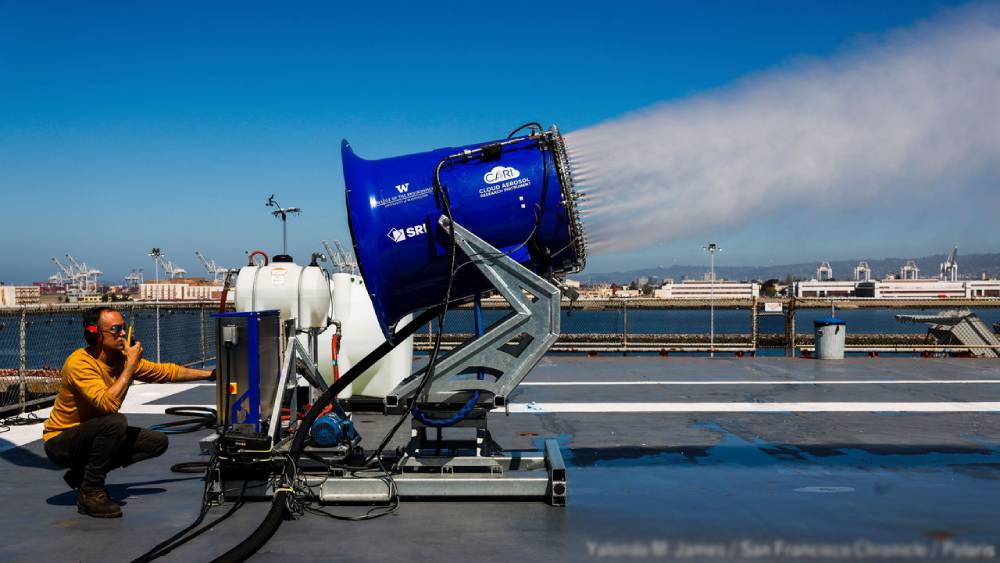The Science Blog

The Ethics of Geoengineering: Should Humans Tinker with Nature?
In recent years, geoengineering has emerged as a controversial yet intriguing field of study. It has sparked debates across scientific, ethical, and political arenas. Geoengineering is the intentional effort to change the Earth’s climate systems. It aims to fight the effects of climate change. The potential benefits of such interventions are alluring. But they also come with a host of ethical dilemmas and environmental responsibilities that cannot be overlooked. This blog looks at the ethics of geoengineering. It asks if we should change nature to reach climate sustainability.
Geoengineering is often seen as a double-edged sword. It offers a potential solution to global warming while posing risks of unforeseen consequences. Is it right to change natural systems for our benefit? This question brings up deep ethical issues. This blog will explore the balance between climate ethics and the urgent need for sustainable solutions.
Key Benefits / Why It Matters
The Promise of Geoengineering
Geoengineering offers several possible benefits, making it a tempting choice for tackling climate change. Techniques like solar radiation management (SRM) and carbon dioxide removal (CDR) could help lower global temperatures. They may also reduce the effects of climate change. This could give societies time to shift to sustainable energy sources. It may also help lower greenhouse gas emissions.
From an ethical standpoint, geoengineering could be viewed as a moral imperative. If we possess the technological means to prevent catastrophic climate impacts, do we not have a responsibility to use them? Supporters say geoengineering might be a key tool in fighting climate change. It could help prevent disasters like rising sea levels, severe weather, and loss of biodiversity.
Real-Life Applications
One of the most discussed geoengineering methods is solar radiation management (SRM). SRM involves reflecting a small percentage of the sun’s light back into space. You can achieve this with methods like stratospheric aerosol injection or cloud brightening. SRM might quickly lower global temperatures. This could give us quick relief from climate change effects.
Carbon dioxide removal (CDR) is another promising approach. It focuses on removing CO2 from the atmosphere and storing it safely. Techniques like afforestation, BECCS, and direct air capture can lower CO2 in the atmosphere. This helps support climate stability.
Ethical Dilemmas of Geoengineering
Playing God or Saving the Planet?
A major ethical issue with geoengineering is if humans should change the Earth’s climate on a large scale. Some argue that geoengineering represents a form of hubris—an overconfidence in our ability to control nature. Some people think that because climate change is so serious, we must find every possible solution. This includes geoengineering.
Who Decides? Global Governance and Ethical Responsibility
Geoengineering interventions could have unequal impacts across different regions and populations. Ethical considerations should focus on fairness. We need to ensure that vulnerable communities are not affected more than others. If a geoengineering technique benefits some nations but harms others, who takes responsibility? International cooperation and transparent governance are crucial in addressing these concerns.
Unintended Consequences and the Precautionary Principle
Geoengineering has major risks. It can disrupt weather patterns, lead to unexpected ecological issues, and create geopolitical tensions. The precautionary principle suggests that in the face of uncertainty, actions that could cause harm should be avoided. Geoengineering may help reduce climate change. However, it might also cause new environmental problems that are hard to predict and manage.
Step-by-Step Guide / Actionable Insights

Understanding the Ethical Framework
To understand the ethics of geoengineering, we must think about some key principles:
1. Precautionary Principle
This principle suggests that in the face of uncertainty, actions that could cause harm should be avoided. Geoengineering can have unexpected effects, so we must think carefully about the risks.
2. Justice and Equity
Geoengineering interventions could have unequal impacts across different regions and populations. Ethical considerations should focus on fairness. We need to make sure that vulnerable communities are not hurt more than others.
3. Environmental Responsibility
The concept of environmental responsibility underscores the need to protect natural ecosystems. Geoengineering must be pursued with a commitment to preserving biodiversity and ecological balance.
Steps to Ethical Geoengineering
Step 1: Comprehensive Research and Risk Assessment
Before starting any geoengineering projects, we need to do a lot of research. This helps us understand the possible risks and benefits. This includes modelling potential outcomes and identifying unintended consequences.
Step 2: Transparent Governance and Public Engagement
Geoengineering choices need clear governance. Scientists, policymakers, and the public should all have a say. Public engagement is crucial to ensure that diverse perspectives are considered.
Step 3: International Collaboration and Regulation
Given the global nature of climate change, international collaboration is essential. Setting rules for geoengineering projects helps ensure they are done responsibly and ethically.
Additional Expert Tips & Common Mistakes to Avoid
Best Practices
- Interdisciplinary Approaches: Geoengineering needs input from different experts. This includes people from climate science, ethics, and social sciences. Their insights help us understand all its implications.
- Adaptive Management: Using an adaptive management approach in geoengineering projects lets us stay flexible. We can adjust based on new information and changing conditions.
Common Mistakes
- Overreliance on Technology: Depending only on geoengineering for climate change may shift focus away from crucial steps. We still need to cut emissions and move to sustainable energy.
- Ignoring Long-Term Effects: Focusing on quick gains can harm the environment and society later on.
Advanced Insights / Expert Recommendations
The Role of Climate Ethics
Climate ethics plays a pivotal role in guiding geoengineering decisions. It looks at the ethics of changing natural systems. It also considers how these changes affect future generations. Ethical frameworks can help navigate the complex trade-offs between potential benefits and risks.
Lesser-Known Insights
- Moral Hazard: Geoengineering could create a moral hazard. It leads to complacency in reducing greenhouse gas emissions. It is crucial to maintain a dual focus on both geoengineering and emission reduction.
- Cultural and Social Dimensions: They help us assess how acceptable and impactful geoengineering interventions are. Different societies may have varying perspectives on the ethical implications of manipulating nature.
Geoengineering: Balancing Innovation and Responsibility

Geoengineering poses tough ethical questions. We must weigh the potential benefits of technology against climate ethics and our duty to the environment. As we face the challenges of climate change, we must handle geoengineering carefully. We need to be open and focus on justice and fairness.
The decision to tinker with nature should not be taken lightly. Geoengineering needs teamwork. We must focus on sustainability and the well-being of today’s and tomorrow’s generations. Let’s remember the ethics of our actions as we go forward. We should work to protect our planet’s fragile ecosystems.
In the end, the question remains: Should humans tinker with nature? The answer is in balancing innovation and ethical responsibility. We must make sure our actions support a sustainable and fair future.









